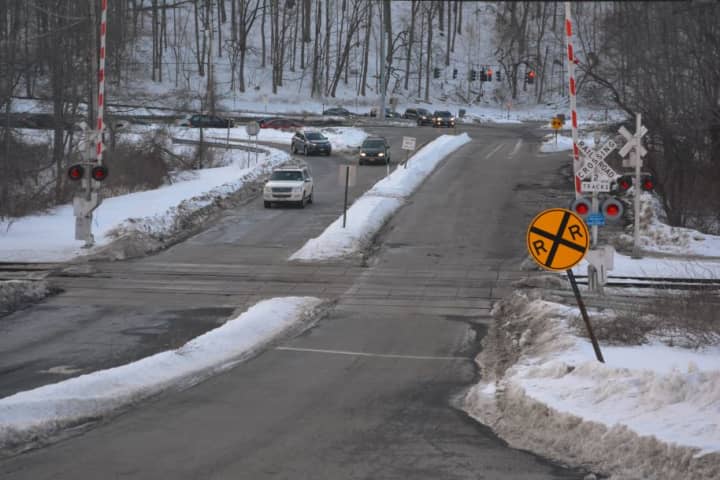Supervisor Rob Greenstein made a request on the town's behalf in a Feb. 6 letter to U.S. Sen. Kirsten Gillibrand.
"Federal assistance is urgently needed so that safety improvements at this grade crossing can be implemented on an expedited basis," Greenstein wrote.
The supervisor adds the Roaring Brook Road grade crossing is "unique," noting its proximity to the Saw Mill River Parkway's ramp interchange and to Horace Greeley High School. Greenstein adds that, due to the school's proximity, morning rush hour "includes a percentage of young and relatively inexperienced drivers."
The stretch of Roaring Brook is adjacent to Chappaqua Crossing to the east of the parkway, while it intersects with Old Roaring Brook Road to the west. The grade crossing is just to the east of the parkway itself, near Chappaqua Crossing, which is the former Reader's Digest corporate campus.
Greenstein, citing New Castle Police Department records, writes that in the past 10 years there were 14 reports of problems with the crossing's gates. He adds that "numerous car accidents have occurred at this location."
Additionally, the supervisor cites New Castle's Town Development Plan (master plan), which was last updated in 1989 and called for an interchange in the area. Greenstein also notes Reader's Digest founders DeWitt and Lila Wallace, even donated land in the 1930s that could be used for a bridge.
A copy of Greenstein's letter can be read here.
Traffic safety was a concern voiced by some residents during the course of the Town Board's review of a proposed retail development at Chappaqua Crossing, which would include 120,000 square feet of retail space.
The Town Board voted in December to re-zone the site for retail usage, although it still has to vote on the development's layout and on the specific placement of the new zone within the property.
Summit/Greenfield, the property's owner, has agreed to traffic mitigation measures that include adding turning lanes at the intersection of Roaring Brook and Route 117, along with improving traffic circulation at the entrance of the high school's campus. However, Greenstein does not want to push for making elimination of the grade crossing a condition to further approvals of the project.
“I don’t think it’s a reasonable request,” he said.
Summit/Greenfield is set to have a role for chipping in for the traffic-mitigation measures already proposed. Greenstein was skeptical of having Summit/Greenfield pay for a bridge due to its high anticipated cost.
The supervisor reiterated his position at the Town Board's Feb. 10 meeting.
The idea of building a Roaring Brook Road bridge is not new. According to a history write up that is posted on the website of the Lawrence Farms East's homeowners' association, a bridge was proposed in the 1920s but never built.
To read the history write up, click here.
Click here to follow Daily Voice Chappaqua and receive free news updates.


